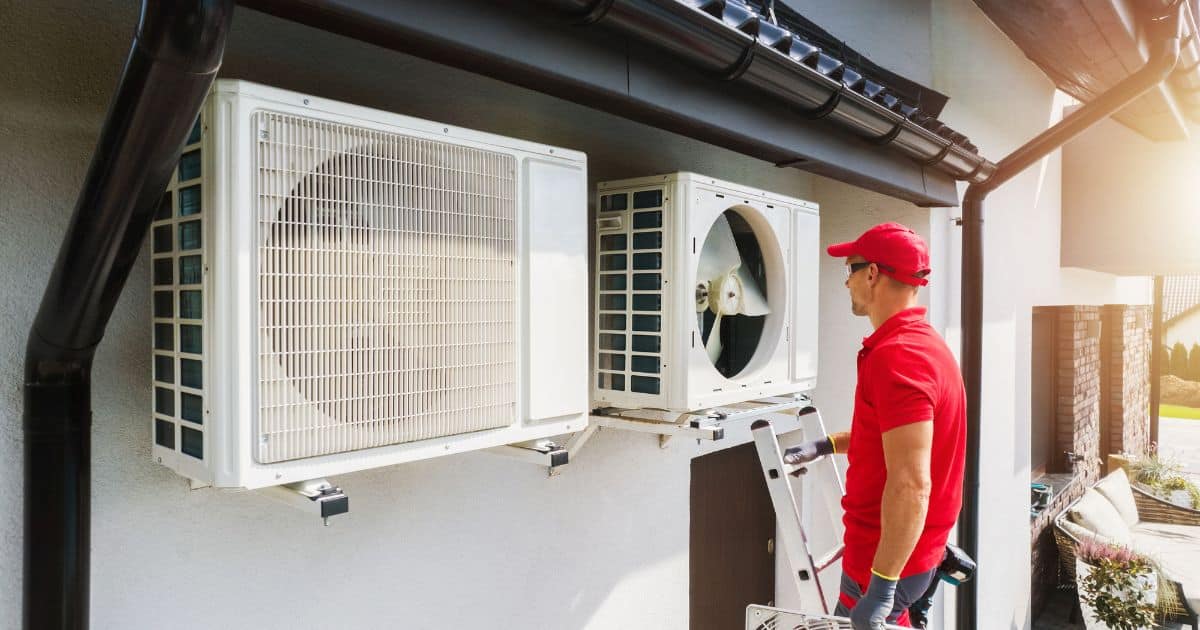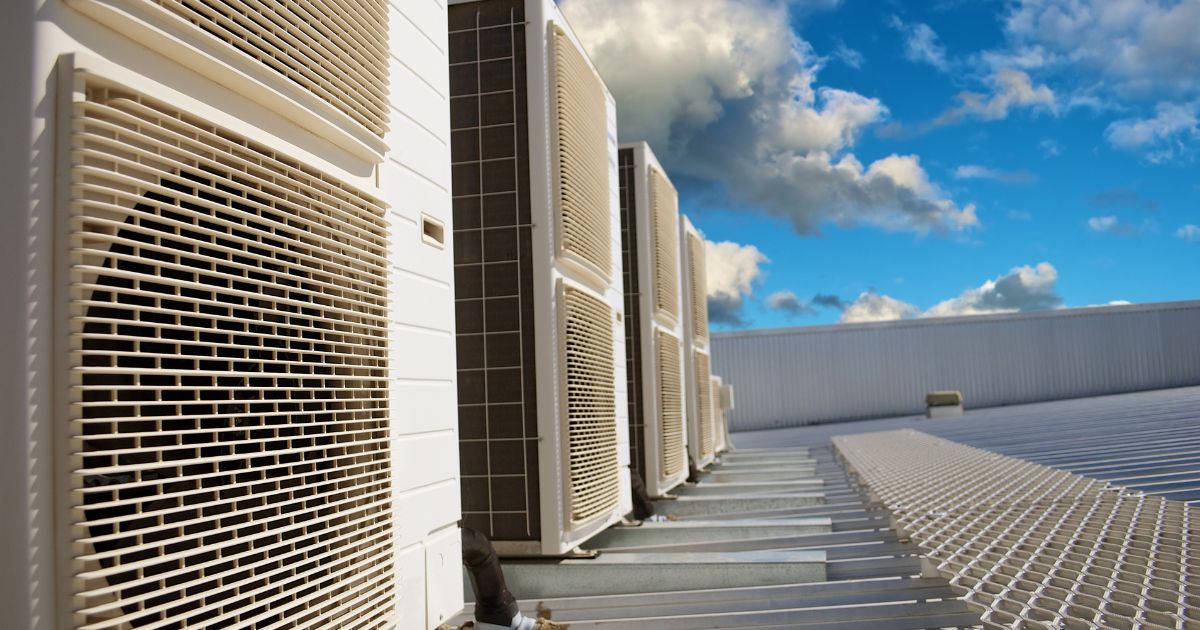Many business owners feel overwhelmed by the plethora of options available when selecting commercial heating and cooling systems.
VP Engineering can help make the decision easier, ultimately giving you the confidence to select the right system to meet your company’s heating and cooling needs and positively impact your bottom line.
Initial HVAC System Information to Consider
When selecting the right HVAC system, there are several factors to consider, including:
- the size and square footage of your building
- weather conditions in your area and seasonal use
- your budget to install and maintain your HVAC system
- the expected lifespan of the chosen unit
- ongoing maintenance of the unit
At the beginning of most projects, business owners often have some idea of the type of HVAC system they would like to use. In these cases, we discuss their initial thoughts and provide our feedback, as well as alternate recommendations that are worth considering for their project.
In situations where a business owner is not as familiar with HVAC systems, we will review the preliminary design of the project and ask questions to determine the expectations for the HVAC system. These questions may cover topics such as initial cost, operating cost, amount of control, equipment location, duct design, etc.
After reviewing this information, we consider the pros and cons of each type of system based on the building size and layout, location, owner’s expectations and expected cost. Only then will we make an informed recommendation.

Making Recommendations for Heating and Cooling Systems
As an example, a 500,000 SF climate-controlled warehouse located in Texas requires a large amount of cooling and minimal heating. Therefore, even though using 50 split system furnaces would have relatively low initial equipment cost, the cost of installation and excessive amount of heating provided by the furnaces make it an inferior system to propose.
In this case, due to the size of the project, providing two dozen RTUs with electric heat and concentric supply diffusers would simplify the installation, thus reducing cost while still providing adequate cooling and heating capacity to maintain the warehouse at a comfortable temperature.
Different Heating and Cooling System Options
What VP Engineering does differently for clients is provide improved communication. Instead of having our engineers and designers contact our clients directly and not just communicate through our project managers.
The benefit of this method is that our designers can develop a professional relationship with our clients and provide a more individualized design experience, and if needed, we can walk through different system options. Following are system options we often discuss.

Specific HVAC Units
Commercial HVAC systems in commercial buildings encompass interconnected systems that provide heat, ventilation, and cooling throughout the building.
The three main HVAC units we recommend for clients include:
- Rooftop Units:
- A roof top unit or RTU is an industry term for a self-contained system that can provide heating, cooling and ventilation to a space.
- As the name suggests, these systems are typically mounted on a roof. However, they can also be mounted on the ground.
- There are many different types of RTUs, which include either heat pump, air conditioner with gas or electric heat.
- Heat Pumps:
- Like air conditionings units, heat pumps use electricity to remove heat from an indoor space and reject it to the outdoors, making the space cooler.
- A heat pump has the ability to reverse this cycle and move heat from the cool outdoors to an indoor space, making the space warmer.
- For climates with moderate heating and cooling needs, heat pumps offer an energy-efficient alternative to furnaces and air conditioners.
- Chillers:
- Simply put, a chiller is basically a large-scale air conditioner. However, instead of using refrigerant, chillers use a water/glycol fluid mixture to cool buildings. Chillers are available in two configurations: air-cooled and water-cooled.
- Air-cooled chillers are located outside and reject heat directly to the outdoors.
- A water-cooled chiller is located inside of the building and is typically combined with an outdoor condensing unit where heat can be rejected.
- Chillers are often used in conjunction with indoor fan coils, which are air handlers with water coils.
- Chillers receive warm fluid from the fan coils and in some cases, other process loads. This process reduces the temperature of the fluid and then a pump returns the cooled water back to the fan coil or process.

Specific HVAC Systems
When selecting the right HVAC system for your business, it is important to consider the pros and cons of each type of system based on the building size and layout, location, owner’s expectations, and cost.
The three main HVAC systems we recommend for clients include:
- Split System:
- A split system is similar to a roof top unit, but instead the system is split into two components: the condensing unit, which is located outside, and the air handler, which is typically located inside. These units are connected with copper tubing that allows refrigerant to pass back and forth.
- There are many different types of split systems, which can include either a heat pump or air conditioner installed outside, combined with either a gas furnace or a fan coil located inside.
- Mini Split Systems:
- Mini split systems are similar to the traditional split system, but differ in two ways. These systems typically have little to no ductwork and are available in smaller sizes. They are also available as a simgle zone system or a multi-zone system.
- In a multi zone system or multi-split, two or more indoor air handlers are connected to a single outdoor condensing unit. The outdoor unit is capable of serving all of the indoor units due to the use of an inverter or variable speed compressor. The compressor is able to adjust its speed in order to match the required cooling or heating capacity required at that moment.
- Variable Refrigerant Flow (VRF) or Variable Refrigerant Volume (VRV):
- Simply put a VRF or VRV system is a large-scale multi split HVAC system that can provide large amounts of heating and cooling capacity. It can also serve more indoor air handlers with a single outdoor unit.
- These systems are available as a heat pump system or as a heat recovery system, which can provide simultaneous heating and cooling to different zones.
- Another benefit to these systems is that the outdoor units require less space, therefore providing a great solution when outdoor space is limited.

Choosing the Right Heating and Cooling Systems
Choosing the right HVAC system and units for your business is just one of many important steps at the start of your building project.
When it’s time to research your options and select the system and units that will provide the greatest efficiencies and cost savings to your business, we encourage you to contact our team of expert engineers for guidance and assistance.
VP Engineering & Incomparable Customer Service
Selecting the right engineering firm to help you with your HVAC system project requires careful consideration and due diligence. No matter what firm you select, the best partnerships emphasize open communication and collaboration for project success.
What truly sets VP Engineering apart is our unwavering commitment to customer service. Our excellence in communication and relentless dedication to offering actionable solutions distinguishes us from most other firms. At VP Engineering, we go beyond the stereotypical engineer by providing thoughtful solutions or alternative options for every challenge we encounter.
Our core values – honesty, integrity, respectfulness, responsiveness, and professionalism – form the foundation of our approach. We take pride in doing the right thing for our clients. Choose VP Engineering as your trusted partner, where commitment meets ingenuity, ensuring the success of your project from conception to completion.
Contact us today and experience the VP Engineering difference.



